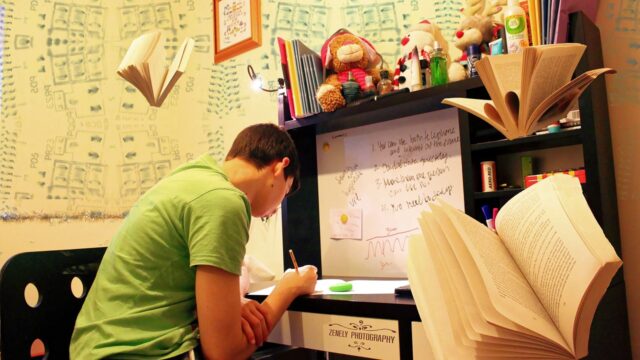ライフハックとしてではなく、英語学習にも極めて有用なのが、著名人が10分程度のプレゼンを行うTEDです。
TED Talksとは、あらゆる分野のエキスパートたちによるプレゼンテーションを無料で視聴できる動画配信サービスのことです。10年ほど前にサービスが開始されてから、政治、心理学、経済、日常生活などの幅広いコンテンツが視聴できることから人気を集めています。
RareJob English Lab
TEDは4000を超える膨大な数の動画があります。しかし慣れないうちは、動画の探し方や視聴のコツが分かりませんよね。この記事では、数多くのTEDを見てきた管理人(塩@saltandshio)が、心を揺さぶられたトークをあらすじと一緒にご紹介します。
ビジネス英会話を効率よく身につけたい方におすすめスクール
シェーン英会話
シェーンは1977年の創業以来、ネイティブ講師が英語を英語で教える「直接教授法」を採用しています。首都圏におけるスクール拠点数は、ネイティブ講師の英会話スクールでNo.1。駅から近いスクールが多いので通いやすく時間を有効に使えます。
スピークバディ パーソナルコーチング
1日1時間の短期集中トレーニングで、あなたの英語力向上をコーチが全力でサポートします。あなたの英語の世界が、劇的に変わります。
デッサ:自分の力で恋を忘れることはできるか
失恋を乗り越えるために一番良い方法は何でしょうか? ラッパーであり作家でもあるデッサは、恋愛状態にある脳に関する、ヘレン・フィッシャーのTEDトークをたまたま視聴しているうちに、型破りなアプローチを思いつきました。皮肉の効いた愉快なトークで、彼女は脳から元彼への気持ちを取り除くために、神経科学者と一緒にどんなふうに取り組んだかということを説明します。そして、その過程で学んだ恋愛にまつわる知恵も教えてくれます(約11分半)。
[PR]無料体験レッスン実施中!全国208校、創業40年の老舗英会話スクール【シェーン英会話】きっかけは、ヘレン・フィッシャー博士のTEDトーク
Doomtreeというヒップホップ集団でラッパーとして活動しているデッサですが、ソロアーティストとしても活動しています。激しく動き回って歌いまわるDoomtreeとは正反対に、ソロ活動のときはメランコリックで失恋の歌ばかり歌っている彼女ですが、じつは曲のモデルになっているほとんどの男性はすべて同じ人です。
最初は互いの努力で深く付き合っていたふたりですが、それは最初の2年間だけでした。その後はなんとなく関係を続け、気が付けば二人はつかず離れずのまま10年も付き合っていました。
私は失恋に心を痛めたばかりでなく、立ち直れないことを恥ずかしいとも感じていました。他の人たちは時期がくれば乗り越えているみたいなのに、一緒にいることが2人にとって良くないと分かっていながらも、この恋をどうしたら良いのかもてあましていました。
And I was not only heartbroken, but I was kind of embarrassed that I couldn’t rebound from what other people seemed to recover from so regularly. And even though I knew it wasn’t doing either of us any good, I just couldn’t figure out how to put the love down.
ある晩、お酒を飲みながらパソコンを見ていたデッサは、ヘレン・フィッシャー博士のTEDトークを目にします。ヒトの脳の中で恋愛に関わる部位の座標を特定できたと話すヘレン・フィッシャー博士の話を聞いて、デッサは自分の脳内にある恋の在り処を特定できるかもと思いつきます。そしてすぐさま、Twitterでいますぐ脳スキャン(fMRI)出来る場所がないかと質問を投げかけたのです。
[PR]まずは無料カウンセリング”続けるため”の オンライン英語コーチ「スピークバディ パーソナルコーチング」脳スキャンで失恋の思い出の場所を特定
デッサの呼びかけにこたえたのは、ミネソタ大学の核磁気共鳴研究センターで研究しているシェリル・オルマン博士でした。シェリル・オルマン博士は実験のサンプルとして、デッサの脳内をfMRIを使ってスキャンしてくれました。
ご存じない方のために説明すると、fMRI装置は 巨大な筒状の磁石で血中の脱酸素化ヘモグロビンの動態を追跡します。
つまり、ある瞬間に脳のどの部位がいちばん酸素を要求しているかを明らかにするんです。
If you’re unfamiliar with that technology, essentially, an fMRI machine is a big, tubular magnet that tracks the progress of deoxygenated iron in your blood.
So it’s essentially figuring out what parts of your brain are making the biggest metabolic demand at any given moment.
実験方法は簡単です。元カレと知らない男性の二枚の写真を見比べて、脳のどこが反応するかを特定するのです。つまり、元カレの写真を見て反応した脳の場所が【恋の在り処】ということです。
シェリル・オルマン博士は後日、一部が赤く光っている脳の断面図の画像を、デッサに送ってくれました。その場所は、時間をかけてシェリル・オルマン博士のチームが解析して見つけ出した、デッサの【恋の在り処】でした。こうしてデッサは、自分の頭の中にあった元カレの居場所を特定することが出来たのです。
[PR]しちだの魔法ペンなら35日でバイリンガルに!楽天4部門1位の英会話!<七田式>頭に電流を流し、脳の筋肉を動かすことで失恋の痛みを消す
失恋の場所を特定したテッサは、次にペニージーン・グレイスファイアという女性に「ニューロフィードバック」という治療をしてもらいました。まず、治療を受ける前にデッサは「これは脳の訓練です」という説明を受けました。
脳を切除したりはしません。筋肉をトレーニングするように脳を訓練することで、脳が柔軟性と復元力を獲得して状況に適切に反応することができるようになります。
We’re not lobotomizing anything. We’re training it in the way
that we would train a muscle, so that it would be flexible enough
and resilient enough to respond appropriately to my circumstances.
脳は、燃え上がる恋をしているときは活動的になっています。逆に、そうでなくなったときはリラックスしていなければいけません。失恋状態にある人の脳は、恋が終わっているにも関わらず、リラックスしていなければいけない脳が活動的になってしまっているのです。
ペニージーン・グレイスファイアは、治療のためにコインよりも少し小さめの電極をデッサの頭に付けました。その機械は、骨や髪の毛や頭皮を通して脳波を測定できるほど感度が高いもので、その場で脳の活動を見ることが出来ます。活動している場所は赤くなり、落ち着いた状態は緑色で現れます。デッサが目指すのは、失恋に対して赤く反応している箇所を緑色にさせることです。
ペニージーンは、何回かにわたって電極を私に装着して、何かしたり考えたりしなくていいと説明しました。私はただじっと動かないで、起きたまま見ていればいいのです。
So Penijean, several times, hooked me up with all her electrodes, and she explained that I didn’t have to do or think anything. I just essentially had to hold pretty still and stay awake and watch.
電流を脳内に流したあと、音楽が流れたら脳が平常の活動状態になったという合図です。こうしてデッサは失恋の治療を施したのでした。
[PR]知って得する、知らないと損をする!すぐに役立つ相手に合った「伝え方」のコツ!再度、脳スキャンを受けてみると恋の痛みが消えていた
ペニージーン・グレイスファイアの治療を受けたあと、デッサはふたたびシェリル・オルマン博士のもとを訪れfMRIで脳スキャンを取りました。しばらくして博士から送られてきた脳の画像には、失恋の痛みに反応していた脳の活動域に、活動反応が見られなくなったという博士の説明が書かれていました。
彼女によると「男性Aによる脳の占有は除去されたように見受けられます。望ましい結果ではないでしょうか」続けて「ですよね?」と。
She said, “Dude A’s dominance of your brain seems to essentially have been eradicated. I think this is the desired result,” comma, yes, question mark.
実際にデッサは、失恋の痛みを乗り越えることが出来ていました。しかし、乗り越えたといっても元カレのことを忘れたわけではありません。これまでの年月の中で積み上げた愛情、尊敬、魅力、そして嫉妬のうち、好意的な感情だけ表面に残り、執着などのネガティブな感情がほとんど残っていなかったのです。
ある意味ではささいなことかもしれません。感情を並べ直しただけ―。でも私にとってはすごく大ごとだったんです。例えて言うならば、「今から麻酔を処置します。それから親知らずを抜きますね」っていうときに、どの順番で処置をするかは重要ですよね?
And that sounds like a small thing in some way, this resequencing of feelings, but to me it felt like the biggest thing. Like, if I told you, “I’m going to anesthetize you, and I’m also going to take out
your wisdom teeth,” it would really matter to you the sequence in which I did those two things.
こうしてデッサは、自分の頭のどの場所が恋を司っているかを知るという、非常に興味深い体験をしたのちに、失恋の痛みを乗り越えることが出来たのでした。
[PR]検定試験合格者累計140万人!スマホ対応☆国家資格ほか資格取得ならSMART合格対策講座まとめ:恋の痛みはもみ消すことが出来る
今回の実験と治療で、デッサは恋愛感情を「よく知る機会になった」と話します。恋愛の衝動的な部分もわかったし、恋愛は左右対称の綺麗なハート型ではないということも学びました。
恋はうまくいくか、うまくいかないかの二択です。お互いに惹かれ合い、好き合っていればお互いに幸せでしょう。けれど、うまくいかなくなる恋もあります。
そうでなかった場合は神経科学者を集めて、無理矢理もみ消すんです!
And if he doesn’t, then you assemble a team of neuroscientists to snuff them out by force.
もし、忘れられない辛い恋があるなら、科学的にもみ消してみるのも一つの方法かもしれませんね。


英語全文
Hello, my name is Dessa, and I’m a member of a hip-hop collective called Doomtree. I’m the one in the tank top.
And I make my living as a performing, touring rapper and singer. When we perform as a collective, this is what our shows look like. I’m the one in the boots. There’s a lot of jumping. There’s a lot of sweating. It’s loud. It’s very high-energy. Sometimes there are unintentional body checks onstage. Sometimes there are completely intentional body checks onstage. It’s kind of a hybrid between an intramural hockey game and a concert.
<全文を読む>▼クリック▼
“You always make music to bleed out to.” And I thought, “Who are you hanging out with that you know that phrase?”
But over the course of my career, I’ve written so many sad love songs that I got messages like this from fans: “Release new music or a book. I need help with my breakup.”
And after performing and recording and touring those songs for a long time, I found myself in a position in which my professional niche was essentially romantic devastation. What I hadn’t been public about, however, was the fact that most of these songs had been written about the same guy. And for two years, we tried to sort ourselves out, and then for five and on and off for 10. And I was not only heartbroken, but I was kind of embarrassed that I couldn’t rebound from what other people seemed to recover from so regularly. And even though I knew it wasn’t doing either of us any good, I just couldn’t figure out how to put the love down.
Then, drinking white wine one night, I saw a TED Talk by a woman named Dr. Helen Fisher, and she said that in her work, she’d been able to map the coordinates of love in the human brain. And I thought, well, if I could find my love in my brain, maybe I could get it out.
So I went to Twitter. “Anybody got access to an fMRI lab, like at midnight or something? I’ll trade for backstage passes and whiskey.”
And that’s Dr. Cheryl Olman, who works at the University of Minnesota’s Center for Magnetic Resonance Research. She took me up on it. I explained Dr. Fisher’s protocol, and we decided to recreate it with a sample size of one, me.
So I got decked out in a pair of forest green scrubs, and I was laid on a gurney and wheeled into an fMRI machine. If you’re unfamiliar with that technology, essentially, an fMRI machine is a big, tubular magnet that tracks the progress of deoxygenated iron in your blood. So it’s essentially figuring out what parts of your brain are making the biggest metabolic demand at any given moment. And in that way, it can figure out which structures are associated with a task, like tapping your finger, for example, will always light up the same region, or in my case, looking at pictures of your ex-boyfriend and then looking at pictures of a dude who just sort of resembled my ex-boyfriend but for whom I had no strong feelings. He was the control.
And when I left the machine, we had these really high-resolution images of my brain. We could cleave the two halves apart. We could inflate the cortex to see inside all of the wrinkles, essentially, in a view that Dr. Cheryl Olman called the “brain skin rug.”
And we could see how my brain had behaved when I looked at images of both men. And this was important. We could track all of the activity when I looked at the control and when I looked at my ex, and it was in comparing these data sets that we’d be able to find the love alone, in the same way that, if I were to step on a scale fully dressed and then step on it again naked, the difference between those numbers would be the weight of my clothing. So when we did that data comparison, we subtracted one from the other, we found activity in exactly the regions that Dr. Fisher would have predicted.
That’s me. And that’s my brain in love. There was activity in that little orange dot, the ventral tegmental area, that kind of loop of red is the anterior cingulate and that golden set of horns is the caudates. After she had had time to analyze the data with her team and a couple of partners, Andrea and Phil, Cheryl sent me an image, a single slide. It was my brain in cross section, with one bright dot of activity that represented my feelings for this dude.
And I’d known I was in love, and that’s the whole reason I was going to these outrageous lengths. But having an image that proved it felt like such a vindication, like, “Yeah, it’s all in my head, but now I know exactly where.”
And I also felt like an assassin who had her mark. That was what I had to annihilate.
So I decided to embark on a course of treatment called “neurofeedback.” I worked with a woman named Penijean Gracefire, and she explained that what we’d be doing was training my brain. We’re not lobotomizing anything. We’re training it in the way that we would train a muscle, so that it would be flexible enough and resilient enough to respond appropriately to my circumstances. So when we’re on the treadmill, we would anticipate that our heart would beat and pound, and when we’re asleep, we would ask that that muscle slow. Similarly, when I’m in a long-term, viable, loving romantic relationship, the emotional centers of my brain should engage, and when I’m not in a long-term, viable, emotional, loving relationship, they should eventually chill out.
So she came over with a set of electrodes just smaller than a dime that were sensitive enough to detect my brainwaves through my bone and hair and scalp. And when she rigged me up, I could see my brain working in real time. And in another view that she showed me, I could see exactly which parts of my brain were hyperactive, here displayed in red; hypoactive, here displayed in blue; and the healthy threshold of behavior, the green zone, the Goldilocks zone, which is where I wanted to go. And we can, in fact, isolate just those parts of my brain that were associated with the romantic regulation that we’d identified in the Fisher study. So Penijean, several times, hooked me up with all her electrodes, and she explained that I didn’t have to do or think anything. I just essentially had to hold pretty still and stay awake and watch.
(Harp and vibraphone sounds play)
So I did. And every time my brain operated in that healthy threshold, I got a little run of harp or vibraphone music. And I just watched my brain rotate at roughly the speed of a gyro machine on my dad’s flat-screen TV. And that was counterintuitive. She said the learning would be essentially unconscious. But then I thought about the other things I had learned without actively engaging my conscious mind. When you ride a bike, I don’t really know what, like, my left calf muscle is doing, or how my latissimus dorsi knows to engage when I wobble to the right. The body just learns. And similarly, Pavlov’s dogs probably don’t know a lot about, like, protein structures or the waveform of a ringing bell, but they salivate nonetheless because the body paired the stimuli. Finished the sessions, went back to Dr. Cheryl Olman’s fMRI machine, and we repeated the protocol, the same images — of the ex, of the control and, in the interest of scientific rigor, Cheryl and her team didn’t know who was who, so that they couldn’t influence the results.
And after she had time to analyze that second set of data, she sent me that image. She said, “Dude A’s dominance of your brain seems to essentially have been eradicated. I think this is the desired result,” comma, yes, question mark.
And that was the exactly the desired result. And finally, I allowed myself a moment to introspect, like, how did I feel? And in one way, it felt like it was the same inventory of feelings that I’d had at the outset. This isn’t “Eternal Sunshine of the Spotless Mind.” The dude wasn’t a stranger. But I’d had love and jealousy and amity and attraction and respect and all those complicated feelings that you amass after long-term love. But it felt like the benevolent feelings had risen to the surface, and the feelings of fixation and the less-generous feelings weren’t quite so present. And that sounds like a small thing in some way, this resequencing of feelings, but to me it felt like the biggest thing. Like, if I told you, “I’m going to anesthetize you, and I’m also going to take out your wisdom teeth,” it would really matter to you the sequence in which I did those two things.
And I also felt like I’d had this really unusual philosophical privilege to understand love. The lab offered to 3D-print my caudate. I got to hold love in my hand.
And then I bronzed it, and I made it into a necklace and sold it at the merch table at my shows.
And then, with the help of a couple of friends back in Minneapolis, one of them Becky, we made an enormous disco ball of it — that could descend from the ceiling at my big shows.
And I felt like I’d had the opportunity to better understand love, even the compulsive parts. It isn’t a neat, symmetrical Valentine’s heart. It’s bodily, it’s systemic, it is a hideous pair of ram’s horns buried somewhere deep within your skull, and when that special boy walks by, it lights up, and if he likes you back and you make each other happy, then you fan the flames. And if he doesn’t, then you assemble a team of neuroscientists to snuff them out by force.
Thanks.
<閉じる>
\ ほかにも気になるトークが満載! /







